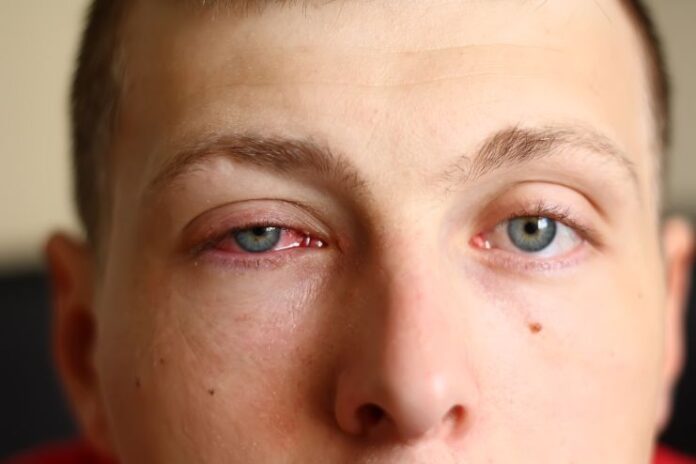Affiliate Disclaimer
Some links in this article are affiliate links. We may earn a small commission if you make a purchase through these links, at no extra cost to you. We only recommend products we find useful to our readersPink eye is a frequent ailment that causes redness, swelling, itching, and discharge due to exposure to germs, viruses, allergies, or irritants. Depending on the cause, it can be highly contagious and affect people of various ages.
Although conventional therapies like antibiotic eye drops exist for bacterial infections, you can treat many mild cases at home with quick-acting natural remedies. Home remedies use harmless and practical materials to help reduce inflammation, alleviate irritation, and promote healing.
These gentle eye care techniques can be performed with good hygiene habits to prevent the infection from spreading. This article examines uncomplicated and efficient at-home treatments for pink eye that can provide immediate and long-lasting relief.
Read More: How to Get Rid of Pinkeye: Home Remedies for Pink Eye
What Is Pink Eye, And What Does It Look Like?
The nonclinical name for conjunctivitis is “pink eye.” This kind of inflammation impacts the conjunctiva, the thin, moist membrane that covers the inner eyelids and the white of the eyes.
Conjunctivitis may affect one or both eyes, and certain varieties spread quickly. Washing your hands frequently and avoiding sharing things like makeup, towels, and pillowcases will help prevent the spread of the disease.
Specific forms of pink eye resolve independently, while others may require treatment for relief. If your condition is moderate, you can manage your symptoms at home using over-the-counter (i.e., non-prescription) eye drops and a cold compress. A doctor may be required to treat other forms of pink eye.
What Causes Pink Eye?
Pink eye, or conjunctivitis, can be caused by a variety of factors, which can generally be divided into infectious and noninfectious causes. Here are the primary causes:
Infectious Causes
- Viral Conjunctivitis:
Viral infections are the most common cause of acute (short-term) conjunctivitis. The adenovirus is the most prevalent virus responsible, but other viruses can also lead to pink eye, including:- Common systemic viruses like mumps or measles.
- Ocular herpes, caused by the herpes simplex virus, can cause inflammation, redness, and discomfort.
- Molluscum contagiosum, a viral skin infection, can also lead to pink eye.
- Bacterial Conjunctivitis:
Bacterial infections are the second most common cause of infectious conjunctivitis. Some of the most frequent bacterial culprits include:- Staphylococcus: The same family of bacteria that causes staph infections.
- Streptococcus: Known for causing pneumococcal infections and strep throat.
- Haemophilus influenzae: A bacterium that can cause meningitis in infants and is also associated with pink eye.
Noninfectious Causes
Noninfectious causes of pink eye do not spread from person to person, and they often result from irritants or allergic reactions. These can include:
- Allergens: Substances such as pollen, molds, and other allergy-inducing particles can trigger inflammation in the eyes, leading to allergic conjunctivitis.
- Irritants: Exposure to chemicals and environmental factors such as chlorine in pools, cigarette smoke, makeup, shampoos, contact lenses or their solutions, and other irritants can cause chemical or toxic conjunctivitis.
- Autoimmune Diseases: Conditions that affect the immune system may lead to inflammation of the conjunctiva, such as in rheumatoid arthritis or lupus.
- Tumors or Malignancies: Although rare, conjunctival tumors or cancers can cause symptoms similar to those of pink eye.
Read More: Dry Eyes: 10 Best Eye Drops 2021; Causes, Symptoms, Treatment
Pink Eye Symptoms
The symptoms of conjunctivitis (pink eye) can vary, but common signs include:
- Red or pink eyes
- Itchy or burning sensations in the eyes
- Watery eyes
- Eye discharge, which may be white, yellow, or green
- Crusting along the eyelids or lashes, making it difficult to open your eyes upon waking
- Swollen eyelids
- A feeling of something being stuck in your eye
- Sensitivity to bright light
These symptoms can be more pronounced depending on the type of conjunctivitis (viral, bacterial, or allergic).
Home Remedies for Pink Eye
Whatever the condition, there are home remedies and alternative medicines for every problem, even pink eye. If you have been wondering how and what kind of remedies will naturally cure pink eye, we have a list of remedies that can come in handy.
1. Cool or Warm Compress
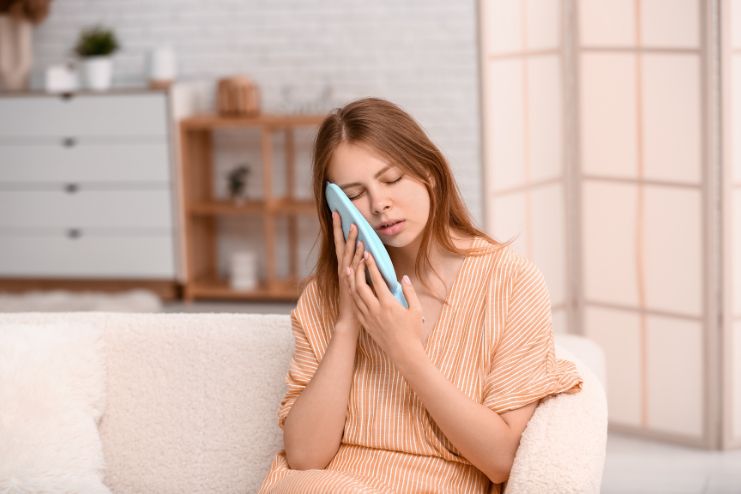
Studies suggest that warm or cool compresses can help reduce inflammation and improve vision. To use a compress, place a clean towel over your eyes for a few minutes, three times a day.
When using compresses, the affected eye(s) should stop discharging. Be sure to use a clean cloth each time to avoid transferring the infection to the other eye. Additionally, a warm compress can help relieve blockages in the tear ducts, easing discomfort.
2. Calendula Solution
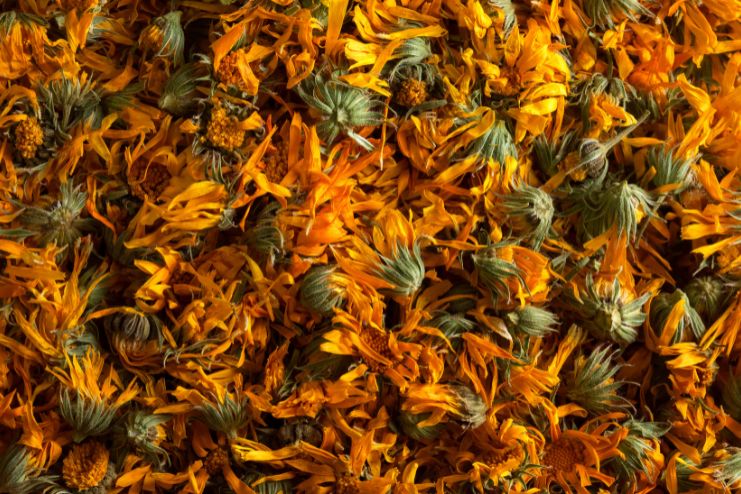
Calendula solution, derived from the medicinal plant Calendula officinalis, has anti-inflammatory qualities that help relieve irritated, itchy eyes caused by follicular conjunctivitis or allergies.
Add 250 milliliters of boiling water to two tablespoons of dried calendula, cover, and steep for fifteen minutes. After the solution has cooled, filter it and dip a fresh gauze pad into it. Gently squeeze out any extra liquid and place it over the closed eyelids for fifteen minutes.
If both eyes are impacted, use a different gauze pad for each eye to avoid cross-contamination. For quick treatment, repeat this therapy up to six times daily.
Read More: How to Get Rid of Watery Eyes
3. Disinfect Surfaces in Your Home
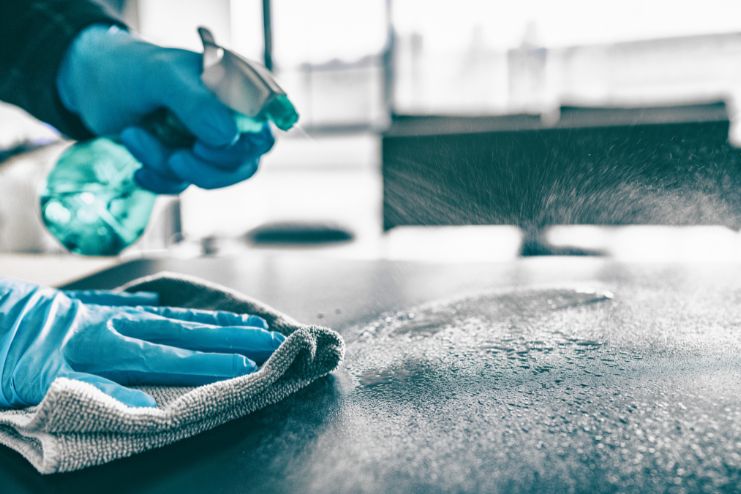
Viruses that cause pink eye can linger on surfaces around your home, and many people unknowingly get reinfected after their symptoms subside.
To prevent this, clean all dry surfaces with a disinfectant and use disinfectant wipes on other areas that may harbor the virus. Thoroughly disinfecting your home helps reduce the risk of spreading conjunctivitis to other family members.
4. Saline Solution
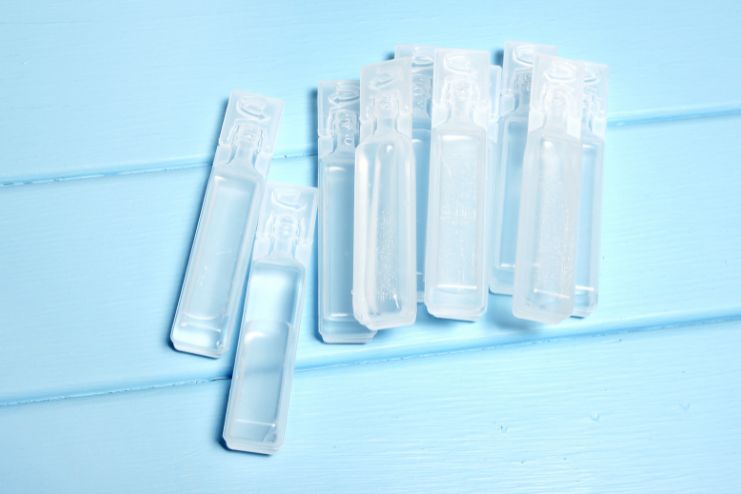
Saline drops or solutions are an effective first aid treatment for allergic conjunctivitis. A simple saline solution made with warm water and salt can help relieve eye irritation.
Eye irrigation, which involves washing the eyes with this warm saline solution, can also provide soothing relief.
5. Hydrastis Tea

Hydrastis tea is a natural medicine with anti-inflammatory and antibacterial qualities. It is produced from the medicinal plant Hydrastis canadensis L. It helps relieve eye irritation and reduce inflammation brought on by conjunctivitis.
To make it, mix 250 milliliters of boiling water with one teaspoon of powdered hydrastis root, stir, cover, and steep for 15 minutes. Strain the tea using a coffee filter to remove any particles. Soak a fresh gauze pad in the lukewarm solution, carefully squeeze out any extra liquid, and cover the closed eyelid for five to ten minutes. Repeat up to three times a day for relief, discarding the gauze after each use.
Read More: 12 Ways To Treat Computer Vision Syndrome – Pay Attention!
6. Pain Relieving Drugs
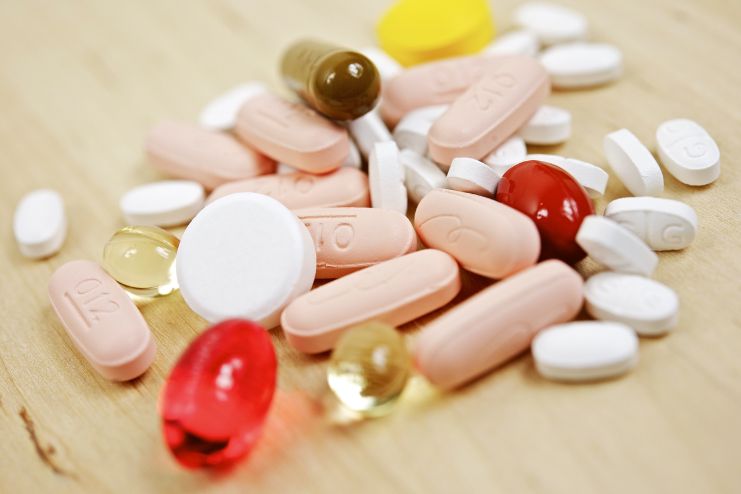
Ibuprofen and other over-the-counter pain relievers can help reduce pain and inflammation caused by pink eye. If allergies are the cause, medications can help treat the allergic reaction.
Topical antihistamine eye drops provide immediate relief, while antihistamine tablets block histamines that trigger eye irritation. Mast cell stabilizers also prevent the release of histamines, helping to avoid allergy flare-ups. These treatments are effective in managing symptoms, especially for allergic conjunctivitis.
7. Chamomile
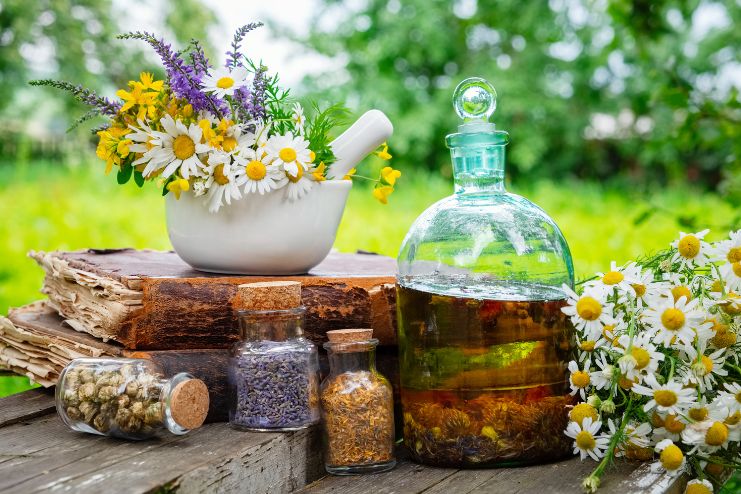
Chamomile infusions are a natural remedy for conjunctivitis, known for their calming and anti-inflammatory properties that help reduce eye irritation and inflammation. To prepare, steep 20-30 grams of fresh or dried chamomile flowers in 500 milliliters of boiling water for 15 minutes. After straining, allow the infusion to cool or chill for 10-20 minutes.
Twice a day, soak a fresh gauze pad in the cooled infusion, squeeze out excess liquid, and place it on the closed eyelid for 15-30 minutes. Alternatively, you can use a cooled chamomile tea bag to directly soothe the affected eye.
8. Practice Good Eye Hygeine
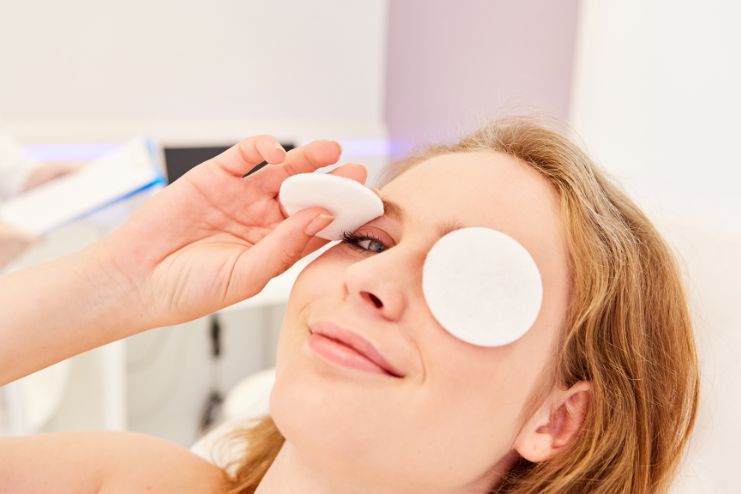
Contact lenses can worsen pink eye symptoms, so it’s important to stop wearing them while you’re infected. Once your symptoms clear, replace your contact lenses and thoroughly clean your old ones.
Maintaining good hygiene around your eyes is crucial, as any discharge can worsen your condition and spread the infection. Be careful to avoid sharing washcloths with others in your household.
Additionally, refrain from wearing makeup while you have conjunctivitis, as it can hinder your recovery. To prevent reinfection, consider discarding any makeup you used before developing pink eye.
Read More: Color Walk Therapy: How Walking with Colors Can Boost Your Mood and Creativity
9. Warm Water and Honey
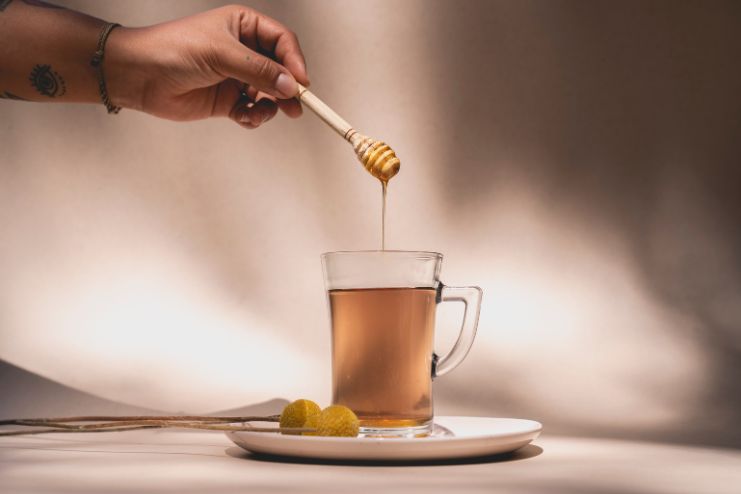
Honey, with its natural antimicrobial properties, can serve as a mild eye wash to help relieve pink eye. When properly diluted, it may assist in combating bacterial infections and reducing inflammation.
To use, dissolve one teaspoon of raw honey in one cup of warm, boiled (and cooled) water. Gently apply the solution to the affected eye using a cotton ball or a clean dropper. Always test the mixture on your skin first to ensure it isn’t too hot or irritating. Apply once or twice daily for relief.
Read More: Eye Health and Diabetes: What You Need to Know
10. Turmeric
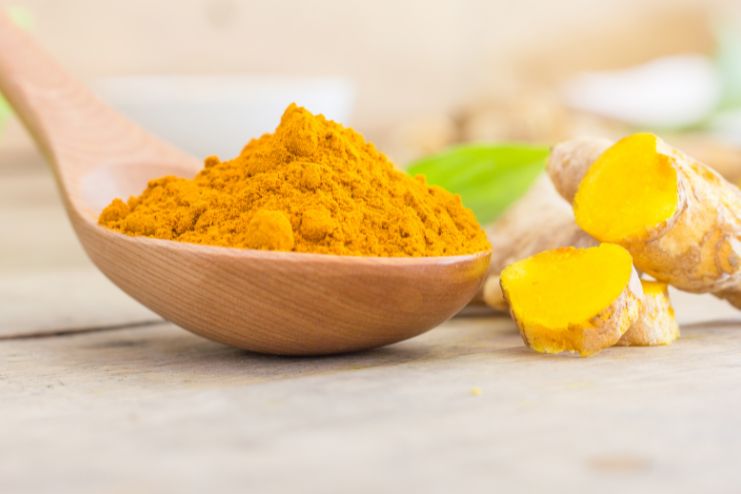
Turmeric has been used since ancient times to help reduce inflammation in different parts of the body. However, it should never be applied directly to the eyes; instead, it should be taken orally.
While turmeric is most commonly found in powder form, it is also available as pills, capsules, extracts, or in its natural root form for cooking. Another popular way to consume turmeric is through teas or milk.
How to Prevent Pink Eye
Preventing pink eye (conjunctivitis) involves not only avoiding infection but also preventing its spread. Since pink eye can be highly contagious, practicing good hygiene and taking proper precautions are essential to keep it from affecting others.
While you can’t always avoid exposure, taking the right steps can reduce the risk of infection and help prevent symptoms from worsening. Here are some effective prevention methods to protect yourself and others from pink eye.
Preventing Pink Eye from Happening:
- Wash your hands frequently, especially after coming in from outside.
- Avoid sharing personal items, such as clothes, towels, or makeup, with others.
- Cover your nose and mouth when sneezing or coughing. If someone around you sneezes without covering, encourage them to do so.
- Do not share contact lenses with anyone, even family members.
- Carry hand sanitizer with you for situations when you can’t wash your hands.
- Avoid exposure to allergens like pollen if you’re prone to allergic reactions.
- Wear goggles while swimming, as the water can contain harmful microbes that may cause infection.
Preventing the Spread of Pink Eye:
- Avoid using or sharing items (clothes, towels, etc.) that belong to someone infected.
- Wear sunglasses or eye protection to keep your eyes covered when you’re out in public.
- Limit contact with others until you fully recover from the infection.
- Sneeze or cough with your mouth covered to prevent spreading the virus or bacteria.
Following these steps can reduce the risk of getting or spreading pink eye.
Read More: Treatment Options for Diabetic Eye Disease: From Laser Therapy to Medications
When to See a Doctor for Pink Eye?
It’s important to see a doctor as soon as possible if you suspect you have pink eye. While viral and allergic conjunctivitis typically don’t cause lasting damage to the eyes or vision, bacterial conjunctivitis can lead to more serious complications and potentially affect your eyesight.
Although not everyone with pink eye will develop bacterial conjunctivitis, it’s always better to err on the side of caution. Getting a professional opinion will either confirm the diagnosis or provide reassurance that it’s something else, allowing you to proceed with the appropriate treatment.
FAQs
- How long does pink eye last?
Bacterial conjunctivitis can resolve with treatment in as little as two to five days. Pink eye caused by a virus usually lasts between three to seven days. The duration of allergic conjunctivitis depends on the presence of the allergen, which can vary from person to person. - Can pink eye go away without treatment?
Yes, pink eye can sometimes resolve on its own, especially if it’s viral or caused by mild irritation. Viral conjunctivitis often clears up within one to two weeks. Mild bacterial infections may also improve without treatment. However, antibiotics might be necessary for more severe bacterial infections, and managing allergens is essential for treating allergic conjunctivitis.
Read More: How to Prevent Digital Eye Strain: Tips for Office Workers
Conclusion
While pink eye can be an annoying condition, it can often be relieved with the right treatment. Powerful natural remedies that help reduce inflammation, ease irritation, and promote healing are frequently available in your garden or kitchen. However, even the most effective treatments can’t replace the importance of good hygiene in preventing infection.
Simple habits like washing your hands regularly, avoiding touching your eyes, and keeping personal belongings separate can help prevent the spread of pink eye. If symptoms worsen, last longer than expected, or are accompanied by severe pain or changes in vision, it’s important to seek medical attention. Always take the best care of your eyes!
-
Oct 2018Written by Somapika D
-
April 2025Edited by Ankita
References
- https://www.medicalnewstoday.com/articles/what-does-pink-eye-look-like#symptoms
- https://www.nei.nih.gov/learn-about-eye-health/eye-conditions-and-diseases/pink-eye
- https://www.healthline.com/health/eye-health/what-does-pink-eye-look-like#treatment
- https://www.aao.org/eye-health/tips-prevention/when-pink-eye-is-something-else-conjunctivitis
- https://www.health.com/condition/eye-health/home-remedies-pink-eye
- https://anaheimeyemd.com/getting-rid-of-conjunctivitis-5-trusted-home-remedies/
- https://www.tuasaude.com/en/home-remedies-for-pink-eye/
- https://anaheimeyemd.com/getting-rid-of-conjunctivitis-5-trusted-home-remedies/
- https://www.tuasaude.com/en/home-remedies-for-pink-eye/
- https://www.avogel.co.uk/health/eyes/conjunctivitis/treatment/
- https://www.toplinemd.com/allergy-institute/home-remedies-for-conjunctivitis-pink-eye-how-to-prevent-it/
- https://www.allaboutvision.com/treatments-and-surgery/remedies/natural-remedies-pink-eye/
- https://my.clevelandclinic.org/health/diseases/pink-eye-conjunctivitis
- https://www.cdc.gov/conjunctivitis/causes/index.html
- https://www.mayoclinic.org/diseases-conditions/pink-eye/symptoms-causes/syc-20376355
In this Article













